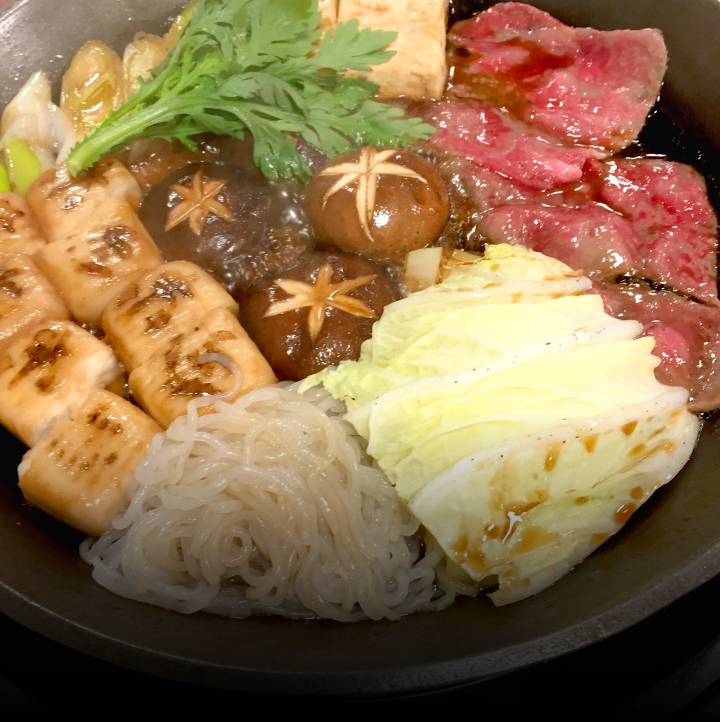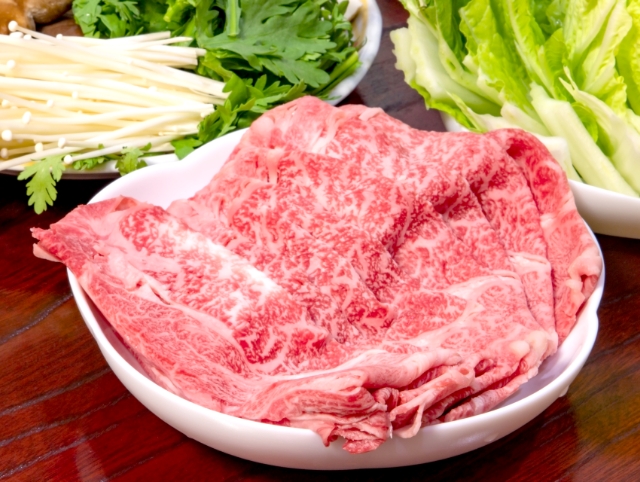Bus-Guide
Around Tokyo
Bus-Guide 関東エリアバス観光ガイド
Kanto Area Bus Tourist Guide
関東エリアバス観光ガイド
Kanto Area Bus Tourist Guide
Bus-Guide
Copyright NIHON BUS ASSOCIATION

GUIDE 02
滞在時間11:18-12:41
Length of Stay11:18-12:41
東京発 東京都台東区 From Tokyo Taito Ward, Tokyo
浅草の展望塔の歴史 The History of the Asakusa Observation TowerGUIDE02
浅草今半 国際通り本店 Asakusa Imahan Kokusai Street Head Restaurant
「浅草今半 国際通り本店」では、牛肉は黒毛和牛の中でもきめ細やかな肉質のメス牛のみを厳選して使用しております。秘伝の割り下を用い、浅めの鍋で焼くようにサッと煮る【浅草今半流すき焼】は、素材のうま味を余すところなく味わうための伝統の技。そのほかしゃぶしゃぶや懐石料理、ランチタイムにはお手軽な丼メニュー等もご提供しております。
料理だけでなく、心のこもったサービスも自慢。店内は、個室や大広間、テーブル席など幅広いご用途にお応えできるお席をご用意しております。
At Asakusa Imahan Kokusai Street Head Restaurant, we only use carefully selected female beef with finely textured meat from Japanese Black Beef. Our Asakusa Imahan-style sukiyaki, which is made by using a secret sauce and quickly simmering the ingredients in a shallow pot, is a traditional technique that allows you to enjoy the full flavor of the ingredients. We also offer shabu-shabu, kaiseki cuisine, and easy-to-make rice bowl dishes at lunchtime.
We are proud not only of our food, but also of our heartfelt service. Our restaurant has a wide range of seating options to suit your needs, including private rooms, a large hall, and table seats.

<もっと知りたい!深掘り>
東京の「牛鍋」×関西の「すき焼き」=「関東風すき焼き」
I want to know more! Digging deeper
Tokyo's "Beef Hotpot" x Kansai's "Sukiyaki" = "Kanto-style Sukiyaki"
日本では仏教の影響を強く受け、天武4年(675年)に肉食が禁止されてから、1200年もの間、たびたび肉食禁止令が出されていました。牛肉を食べる習慣が復活したのは幕末になってからです。
明治時代に入ると、牛鍋屋が次々と開店し、1877年(明治10年)には、東京にある牛鍋屋は550軒を超え、空前の牛肉ブームが来ました。
仮名垣魯文(かながき ろぶん)の小説『安愚楽鍋』(1871年・明治4年)にも、「士農工商老若男女。賢愚貧富おしなべて、牛鍋食わねば開花不進奴(ひらけぬやつ)」とあるように、身分、年齢、貧富の差を超えて、すべての人々が夢中になるほど、「牛鍋」の人気ぶりがうかがえます。「牛鍋」は、文明開化を象徴する料理だったのです。
「すき焼き」はもともと関西言葉です。語源には諸説ありますが、農耕具の「すき」で、肉を焼いたという説が有力です。関西では魚を用いた「魚すき」「沖すき」といわれる料理が、牛肉を使った「すき焼き」よりも先に存在していました。関西で牛肉が使われる「すき焼き」が創作されたのは、明治時代になってからのことです。具を溶き卵につけて食べるのも関西の風習でした。
東京で「牛鍋」が流行している頃、関西では「すき焼き」が流行していました。
1923年(大正12年)の関東大震災で、東京の牛鍋屋は被害を受け、多くの店が閉店してしまいました。その後、関東に関西の「すき焼き」が伝わり、「牛鍋」をアレンジし、わりしたを使って肉と野菜を煮込む、「関東風すき焼き」ができ、一般に広まりました。
In Japan, Buddhism has had a strong influence, and after the ban on eating meat was imposed in the 4th year of Tenmu (675), meat-eating bans were issued frequently for 1200 years. It was only at the end of the Edo period that the custom of eating beef was revived.
In the Meiji era, beef stew restaurants opened one after another, and by 1877 (10th year of the Meiji era), there were over 550 beef stew restaurants in Tokyo, and an unprecedented beef boom occurred.
As Kanagaki Robun's novel "Angura Nabe" (1871, 4th year of the Meiji era) states, "Samurai, farmers, artisans, merchants, young and old, men and women. The wise, the foolish, the rich and the poor, all people who do not eat beef stew will never blossom," we can see how popular "beef stew" was, transcending differences in status, age, and wealth. "Beef stew" was a dish that symbolized civilization and enlightenment.
"Sukiyaki" is originally a Kansai word. There are various theories about its origin, but the most likely is that it is a farming tool called "suki" that was used to grill meat. In Kansai, dishes called "fish suki" and "oki suki" that use fish existed before "sukiyaki" that uses beef. "Sukiyaki" that uses beef was created in Kansai during the Meiji period. It was also a Kansai custom to dip the ingredients in beaten eggs and eat them.
When "gyunabe" (beef hotpot) was popular in Tokyo, "sukiyaki" was also popular in Kansai.
In the Great Kanto Earthquake of 1923 (Taisho 12), beef hotpot restaurants in Tokyo were damaged and many closed. After that, Kansai "sukiyaki" spread to Kanto, and "Kanto-style sukiyaki" was created by simmering meat and vegetables in warishita, and became popular among the general public.
GUIDE 03 /Sensoji Temple and Nakamise Street
GUIDE 01 /Former site of Mount Fuji Observation Area(Asakusa 6th Ward)
浅草今半 国際通り本店 Asakusa Imahan Kokusai Street Head Restaurant
〒111-0035 東京都台東区西浅草3丁目1-12 3-1-12 Nishiasakusa, Taito-ku, Tokyo 111-0035
https://www.asakusaimahan.co.jp/